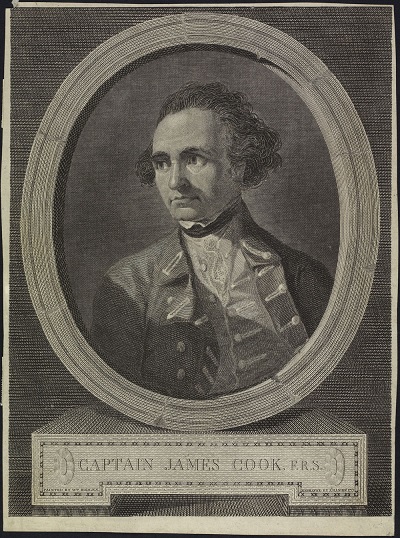Cook, Captain James National Historic Person
Corner Brook (NL) and Bedford (NS), N/A

Captain James Cook
© Library and Archives Canada | Bibliothèque et Archives Canada, Acc. No. 1970-84-20
Address :
Corner Brook (NL) and Bedford (NS), N/A
Recognition Statute:
Historic Sites and Monuments Act (R.S.C., 1985, c. H-4)
Designation Date:
1945-05-16
Life Date:
1728 to 1779
Other Name(s):
-
Cook, Captain James
(Designation Name)
Research Report Number:
1960-011, 2010-SDC-CED-024
Importance:
Surveyed coast of Newfoundland (1763-67), Gulf of St. Lawrence and Nova Scotia (1758-62)
Plaque(s)
Original plaque dismantled / removed / replaced: DeWolf Park, Bedford, Nova Scotia
Before the voyages that brought him world fame as Captain Cook, this British Royal Navy officer compiled navigational charts for the coasts of Quebec and Nova Scotia. While based in Halifax from 1758 to 1762, he learned triangulation and other valuable skills, which later enabled him to produce the first scientific, large-scale hydrographic survey of the dangerous coast of Newfoundland. His charts were to remain standard for a century. Cook’s masterful work prompted the Admiralty to choose him to lead three voyages to the Pacific, where his superior skills yielded a rich legacy of scientific and geographical knowledge.
Additional plaque: Captain James Cook Historic Site, Crow Hill Road, Corner Brook, Newfoundland and Labrador
From 1763 to 1767 Captain James Cook, R.N., directed a survey embracing the greater part of the coast of Newfoundland. The charting of this coastline was the first scientific, large scale, hydrographic survey to use precise triangulation to establish land outlines. It produced a collection of charts which remained standard for a century. The choice of Cook to carry out Pacific exploration was the result of his success in Newfoundland. Cook's visit to this area on his ascent of the Humber as far as Deer Lake was part of the first serious attempt to delineate the inland topography of Newfoundland.